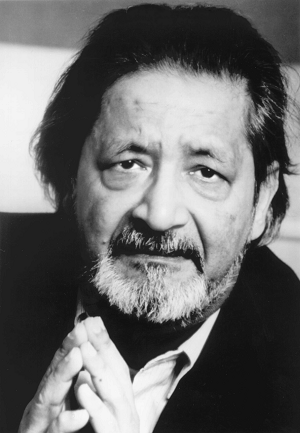Dec 28, 2025
Dec 28, 2025
 Vidiadhar Surajprasad Naipaul is, unsurprisingly, highly acclaimed name in the history of the postcolonial Indian Diasporic literature. Though the question of identity is not new, and much work has been done on this theme of identity but still a few very important strands of identity are still untouched. Before discussing it extensively, it is necessary to explain what actually identity means.
Vidiadhar Surajprasad Naipaul is, unsurprisingly, highly acclaimed name in the history of the postcolonial Indian Diasporic literature. Though the question of identity is not new, and much work has been done on this theme of identity but still a few very important strands of identity are still untouched. Before discussing it extensively, it is necessary to explain what actually identity means.
26-Jun-2013
More by : Bijender Singh

|
Dear Mr. Singh: Greetings! My name is Raúl Vázquez. I am a PhD student at the Río Piedras campus at the University of Puerto Rico; one of my PhD courses for this semester has charged my to compile an annotated bibliography of twenty works dealing with Naipaul's A Bend in the River, so I was wondering whether you could tell me where I can find a PDF version of this article, preferably one published in an official academic journal. I ask this because I want to make things easier for me when the time comes to write the citation in MLA format. Please answer as soon as possible. Thank you for your time. |

|
I am working on Naipaul for my Ph.D and I read many books about him in this process. Though it is difficult to admire him as a person, one cannot overlook his achievement. If we read his biography and try to understand him we will be able sympathize with him. His language is admirable. |

|
it's very use ful to me |

|
Dear Bijendar Singh ji I have read your paper and I invite you to contribute the same paper for my forthcoming anthology on Indian Diaspora. Your academic cooperation/contribution shall oblige me Thanks and Regards Ajay K Chaubey Mob. No: 08057961930 |

|
thanks for the comment.i know all that about v s naipaul n even his personal life but his talent cant b ignored.hate the sin nt the sinner.again thanks |

|
B.S.Naipaul is no doubt a great writer. But his personal life has been a mess. His treatment of women especially was sickening and degrading. He used to visit prostitutes when his wife was dying of cancer and sexual behaviour with his Ksouth American was equally disgusting. His behaviour towards his black friend was racist. So one should be careful not to elevate any one or hero worshipping unnecessarily . |